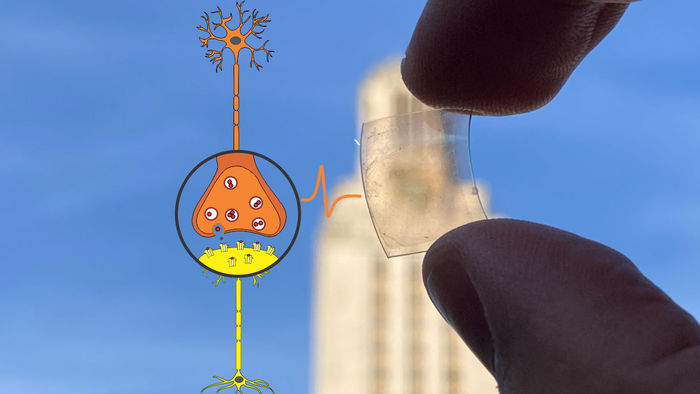Computers that operate more like human brains are becoming more of a reality. However, there are still a lot of unresolved issues that remain. One of the most crucial unanswered questions revolves around what types of materials will be best suited to unlock the potential of this novel style of computing.
 A transistor that operates like synapses in the brain. Image Credit: the University of Texas at Austin.
A transistor that operates like synapses in the brain. Image Credit: the University of Texas at Austin.
The gold standard for the majority of conventional computing devices is still silicon. However, researchers are striving to make these brain-like devices out of more adaptable, effective, and environmentally friendly materials.
The thin, flexible substance graphene was used by scientists at The University of Texas in Austin to create synaptic transistors for brain-like computers. These transistors resemble the synapses that link neurons together in the brain.
Computers that think like brains can do so much more than today’s devices. And by mimicking synapses, we can teach these devices to learn on the fly, without requiring huge training methods that take up so much power.
Jean Anne Incorvia, Study Lead Author and Assistant Professor, Electrical and Computer Engineer, Cockrell School of Engineering, University of Texas
The study was published in the journal Nature Communications.
The Research:
The synaptic transistor is built on a foundation of graphene and nafion, a polymer membrane material. Together, these materials show essential synaptic-like properties, most notably the capacity of the pathways to become stronger with time as they become more frequently used, a kind of brain muscle memory. This implies that computers will be able to do jobs like image recognition and interpretation more quickly and accurately over time.
The fact that these transistors can interact with living cells and tissue and are biocompatible is another significant discovery. That is key for potential applications in medical devices that come into contact with the human body. Since the majority of the materials utilized to create these early brain-like devices are poisonous, living cells cannot be in contact with them in any manner.
Why It Matters:
Researchers are approaching the boundaries of silicon chip efficiency in terms of data processing and storage with new high-tech concepts like self-driving cars, drones, and robotics. There is a requirement for a novel computing paradigm for this next-generation technology. Neuromorphic technology imitates the brain’s processing power, making it a potent computer for immersive activities.
Biocompatibility, flexibility, and softness of our artificial synapses are essential. In the future, we envision their direct integration with the human brain, paving the way for futuristic brain prosthesis.
Dmitry Kireev, Study Co-Lead and Post-Doctoral Researcher, University of Texas
Will It Really Happen?
Platforms that mimic neurons are starting to appear more frequently. Leading chip manufacturers like Intel and Samsung have previously manufactured neuromorphic processors or are in the process of currently developing them.
Academic scientists are working hard to identify the ideal materials for soft brain-like computers since the capabilities of neuromorphic devices are now constrained by the chip materials that are used.
“It’s still a big open space when it comes to materials; it hasn’t been narrowed down to the next big solution to try. And it might not be narrowed down to just one solution, with different materials making more sense for different applications,” Incorvia said.
The Team:
Incorvia and Deji Akinwande, a professor at the Department of Electrical and Computer Engineering, were in charge of the research. Akinwande is a top expert in graphene, and the two have worked together on numerous occasions in the past. More recently, he developed a wearable electronic tattoo for blood pressure monitoring.
Samuel Liu, a Ph.D. student and the paper’s primary author, came up with the concept for the project while taking an Akinwande seminar. Then Kireev made the exact project suggestion. The devices were examined, and undergraduate electrical and computer engineering student Harrison Jin processed the data.
The team joined forces with T. Patrick Xiao and Christopher Bennett of Sandia National Laboratories, who performed neural network simulations and data analysis.
Journal Reference:
Kireev, D., et al. (2022) Metaplastic and energy-efficient biocompatible graphene artificial synaptic transistors for enhanced accuracy neuromorphic computing. Nature Communications. doi.org/10.1038/s41467-022-32078-6.